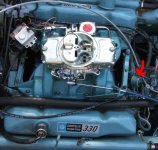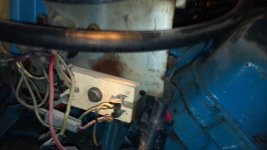captain_ed
Regular Contributor
Hello,
I am considering putting an Edelbroch performer (2191) aluminum intake on my chrysler 440M (year 1976). I have the single sided raw water pump on the engine. I beleive it is called a half system. Antifreeze runs through the block and raw water through the exhaust manifolds.
Is this a good choice? What are advantages of aluminum intake vs. stock? Is there such a thing as a Edelbroch marine intake manifold?
My boat is a 1977 40 ft. jersey Dawn sportfish ( very heavy 32,000lbs.) I have purchased a edelbroch 1410 marine carbs for the engines also. I am looking for economy an torgue at around 3200 r.p.m.
Thanks for any advice.
Ed
I am considering putting an Edelbroch performer (2191) aluminum intake on my chrysler 440M (year 1976). I have the single sided raw water pump on the engine. I beleive it is called a half system. Antifreeze runs through the block and raw water through the exhaust manifolds.
Is this a good choice? What are advantages of aluminum intake vs. stock? Is there such a thing as a Edelbroch marine intake manifold?
My boat is a 1977 40 ft. jersey Dawn sportfish ( very heavy 32,000lbs.) I have purchased a edelbroch 1410 marine carbs for the engines also. I am looking for economy an torgue at around 3200 r.p.m.
Thanks for any advice.
Ed



